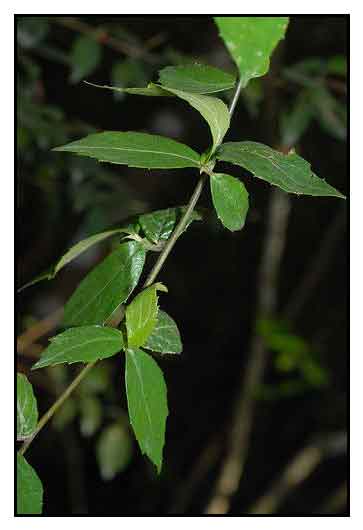
Family • Asteracea
Katarai
Blumea pubigera (Linn.) Merr.
Fu xue kang
| Scientific names | Common names |
| Blumea chinensis var, villosa Warb. | Katarai (Sul.) |
| Blumea pubigera (Linn.) Merr. | Kuli-amu (Sub.) |
| Conyza pubigera Linn. | Lankat (Mbo.) |
| Crassocephalum pubigerum (L.) Kuntze | Pagang-pagang (C. Bis.) |
| Blumea pubigera (L.) Merr. is an accepted name. The Plant List | |
| Synonyms of B. pubigera from Quisumbing's compilatiion: Blumea pubigera (Linn.) Merr., Blumea chinensis var, villosa Warb., Blumea riparia DC., Conyza chinensis L., Conyza pubigera Linn., Conyza riparia Blume. | |
| Quisumbing's compilation lists Blumea riparia DC as synonym of Blumea pubigera (L.) Merr. Other compilations list them as separate species. Some of the info and studies below are attributed to B. riparia. | |
| Other vernacular names |
| CHINESE: Fu xue kang, Jia dong feng cao. |
| INDONESIA: Tombak-tombak (Malay), jonge areuy, lalangkapan |
| PAPUA NEW GUINEA: Mulmul, mungla |
| LAOS: Phang nhot pang |
| THAILAND: Mu masang, kamu maeng |
| VIETNAM: Day bau rung, cuc leo |
Distribution Constituents Availability |
Godofredo U. Stuart Jr., M.D. |
Last Update October 2015
![]()
 |
| IMAGE SOURCE: / Blumea riparia (Blume) DC. var. megacephala Randeria / Pij.johnny / Creative Commons Attribution / flickr / Click on graphic to see original image |
Additional
Sources and Suggested Readings |
| It is not uncommon for links on studies/sources to change. Copying and pasting the information on the search window or using the DOI (if available) will often redirect to the new link page. |
• |
 |

 Botany
Botany